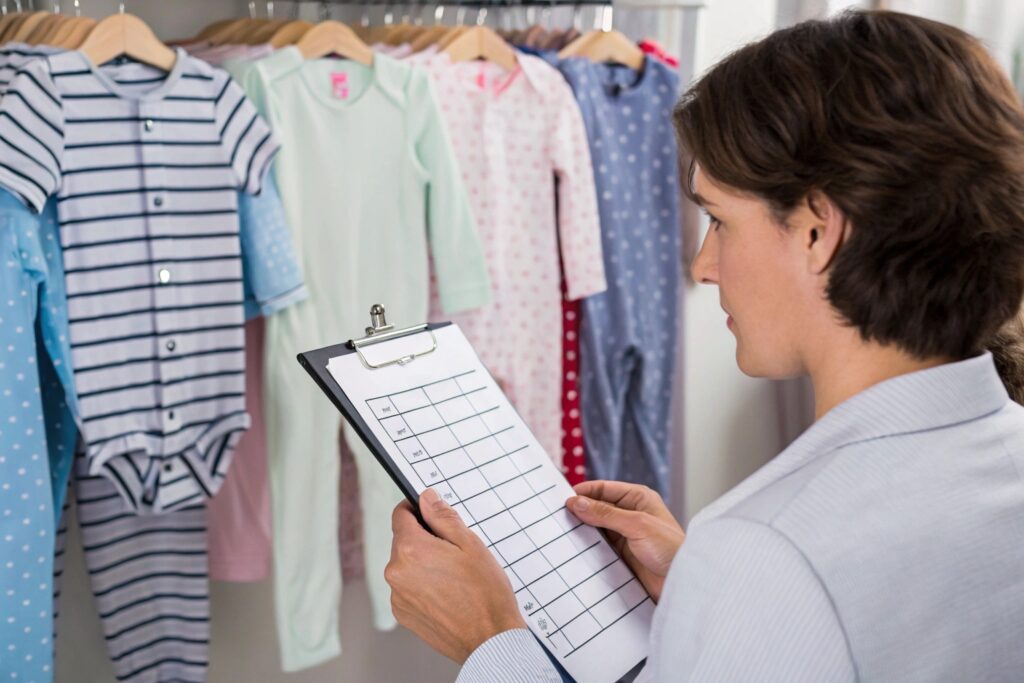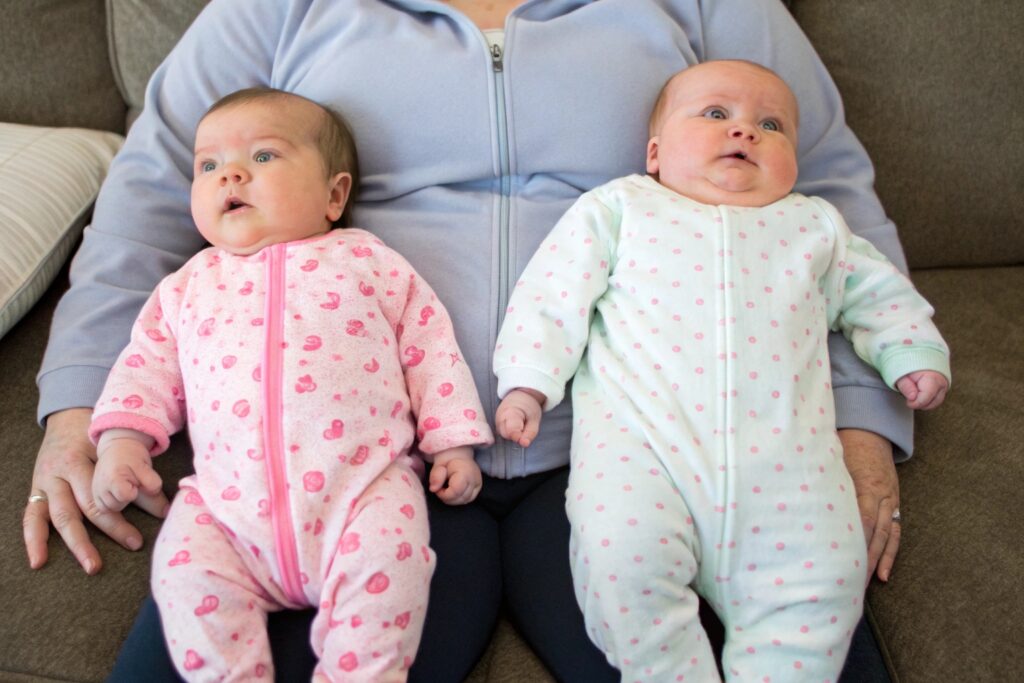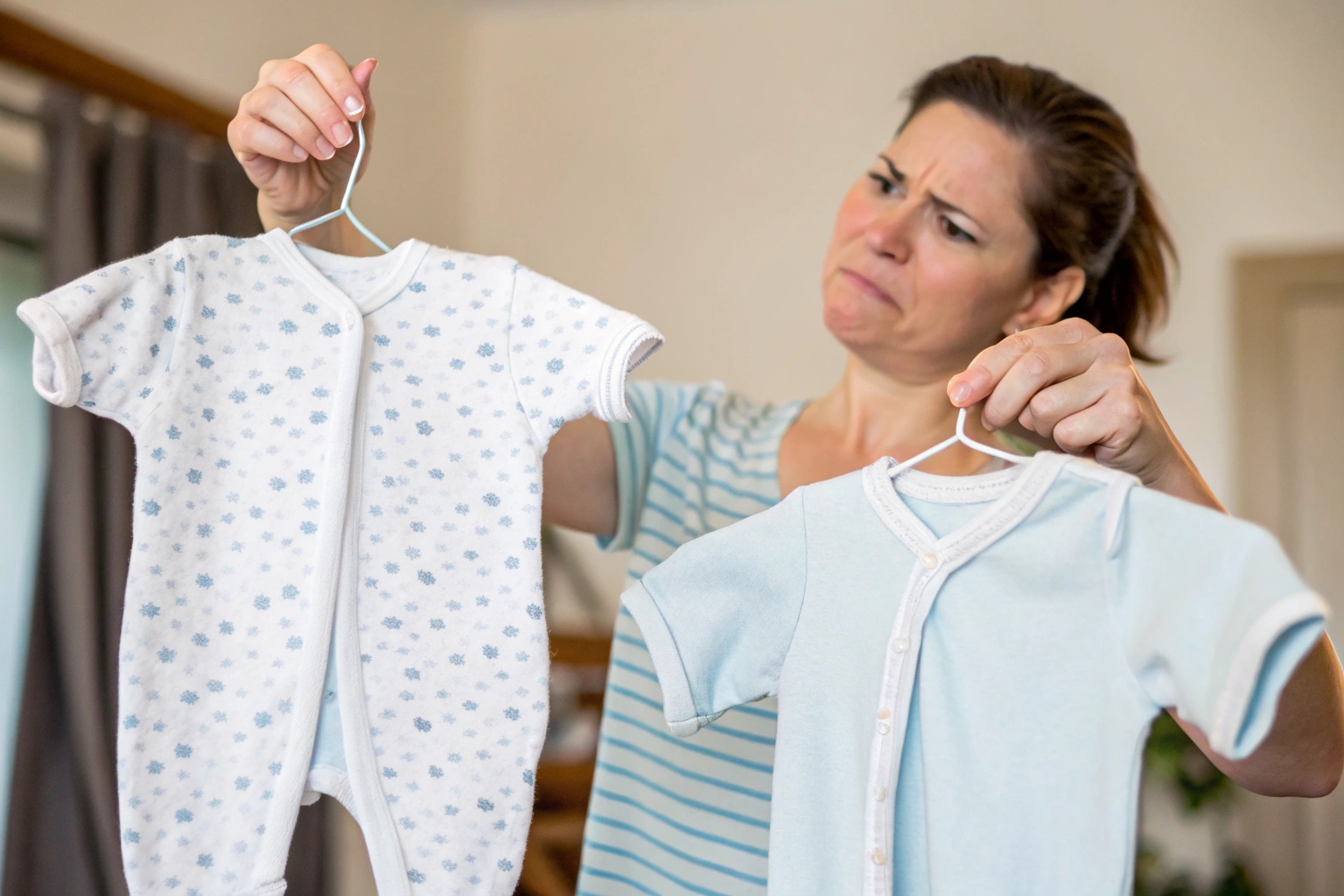Shopping for baby clothes seems easy—until nothing fits. Some outfits are too small before the tags come off. Others hang loose for weeks. Parents are left guessing.
Parents struggle with baby sizes because growth is unpredictable, sizing labels vary, and brand charts often lack real-world accuracy.
Let me walk you through why size confusion is so common, and how I’ve helped both buyers and brands make sizing easier, clearer, and less frustrating.
Does Parent Size Affect Baby Size?
Many parents assume their baby’s size will match their own build—but baby growth is far more complex and less predictable than adult genetics.
While parental height and weight may influence baby size at birth, other factors like gender, birth order, and gestational age play larger roles.

Can tall or plus-sized parents expect to have bigger babies?
In general, larger parents may have slightly larger babies. But it’s not a guarantee. I’ve seen petite parents with 9-lb babies and tall parents with preemies. That’s because baby size depends on many other factors, like:
- Mom’s health and nutrition during pregnancy
- Full-term vs. early delivery
- Genetics from both sides of the family
- Baby’s sex—boys tend to be slightly heavier
Here’s a quick table showing how some factors affect newborn size:
| Factor | Impact on Baby Size |
|---|---|
| Parent height/weight | Moderate influence |
| Birth order | Second babies may be larger |
| Gestational age | Strong impact (preemie/full) |
| Baby gender | Boys usually weigh slightly more |
Why is this important when buying baby clothes?
If you rely on assumptions like “I’m tall, so my baby will need size 3M right away,” you may overbuy. I always recommend parents buy a small number of basics in size 0–3M, and wait to see what actually fits.
Which Parent Determines Baby Size?
It’s common to hear people say, “The baby gets their size from the dad” or “She’s small like her mom.” But how much of this is true?
Both parents contribute to baby size, but maternal health, placenta function, and in-utero growth factors have more control over actual birth size.

Is it the mother or the father who determines how big the baby will be?
Genetically, both parents contribute equally. But the mother’s body plays a bigger role in:
- How much the baby can grow inside the womb
- Nutrient and oxygen delivery through the placenta
- Timing of delivery, which affects final birth size
So even if a father is 6’2”, if the baby is born two weeks early, they might still wear newborn size. I’ve learned to design size charts based not just on expected age, but also on birth weight ranges to better match what parents actually need.
How can understanding this help with better size planning?
By focusing less on “age = size” and more on weight/height ranges, we help parents choose smarter. When I consult brands, I always recommend sizing labels like:
- “Up to 9 lbs (4.1 kg)”
- “For babies 21–24 in (53–61 cm) tall”
These are clearer than “newborn” or “0–3M” alone.
How Are Baby Sizes Determined?
Baby clothes are tiny—but the sizing systems behind them are anything but simple. Different brands, countries, and factories all do it differently.
Baby sizes are typically based on average body length and weight for each age group, but sizing varies widely by brand and region.

Who decides what size counts as 3–6M or 6–9M—and why are they all different?
Most sizing is based on growth charts from pediatric health data. For example:
- 0–3M: Fits babies 8–12 lbs and up to 24 in
- 3–6M: Fits babies 12–17 lbs and up to 27 in
But every brand tweaks these numbers. Some add “growth room” to reduce returns. Others make them tighter to improve garment look. That’s why size 3–6M in one brand might be much smaller than another.
Here’s how size tags often translate:
| Size Label | Avg. Weight (lbs) | Avg. Height (in) |
|---|---|---|
| Newborn | 5–8 | 18–21 |
| 0–3 months | 8–12 | 21–24 |
| 3–6 months | 12–17 | 24–27 |
| 6–9 months | 17–21 | 27–28.5 |
How do I adjust sizing when buying from international suppliers?
I always request the factory's size chart in centimeters, then convert it to my local sizing. I also test samples on baby models before confirming bulk orders. That’s the only way to catch real-world fit issues—especially when dealing with Chinese size tags like “66,” “73,” or “80,” which are height-based.
Are Baby Sizes Accurate?
Most parents quickly realize: baby sizes are more of a suggestion than a rule. What fits one 3-month-old might not fit another at all.
Baby sizes are approximate and vary by brand, body type, and growth rate—so they’re not 100% accurate without measurement guidance.

Why do some babies outgrow clothes labeled for their age within a week?
That’s because babies grow at wildly different rates. Also:
- Diaper size affects fit (cloth diapers add bulk)
- Chubbier babies may need more room in the waist and thighs
- Stretchy vs. woven fabric creates different fits
I’ve seen babies born at 10 lbs who skip “newborn” sizes altogether. And others stay in 0–3M for nearly 4 months. That’s why I never rely on age labels alone.
What can brands and parents do to improve sizing accuracy?
Brands should use both age and measurement on labels. Parents should:
- Always check the height/weight guide
- Look at product reviews for sizing feedback
- Try a few different brands before bulk-buying
I also recommend retailers include fit notes like:
“Runs small, size up if baby is over 10 lbs”
“Generous stretch in waist—ideal for cloth diaper babies”
That kind of detail makes a big difference in customer satisfaction—and repeat orders.
Conclusion
Finding the right baby size shouldn’t feel like solving a puzzle. But thanks to genetics, growth speed, and inconsistent labels, it often does. The solution? Focus on real measurements, not just age—and build sizing systems that reflect how babies actually grow.










